Body Confidence
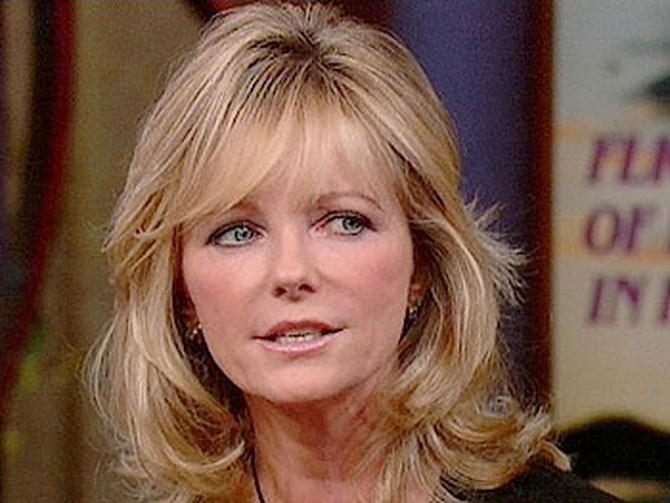
Cheryl Tiegs
Jane Fonda, Raquel Welch, Iman, Farrah Fawcett, Cheryl Tiegs and Jayne Kennedy—their figures made them famous, opened doors and shaped the way we look at women. How did that make them feel? And how do they feel today?
At age 58, Cheryl Tiegs still likes to wear short skirts. "Putting on a bathing suit doesn't scare me," she says. "I've done it all my life." At 19 she was on the cover of Glamour and went on to make the cover of Sports Illustrated three times. Posing in 2004 for Sports Illustrated's swimsuit anniversary issue was "totally easy," she says.
Most things seem easy for Cheryl. "Like anyone else, there are days I feel beautiful and days I don't, and when I don't, I do something about it." Like what? "Go out and exercise. It gets the endorphins going and brings a glow to the skin."
In her 20s, Cheryl gained 35 pounds and was once sent home from a photo shoot. She tried many diets, which failed, until she learned about nutrition and devised a regimen that she's refined to a science. It includes three sessions of yoga, two of weight training and some cardio exercise every week, and she avoids eating pasta, bread, dairy or sweets. Is it onerous having to live like that to stay in shape? "It's a pleasure," she says. "It's the easiest thing."
At age 58, Cheryl Tiegs still likes to wear short skirts. "Putting on a bathing suit doesn't scare me," she says. "I've done it all my life." At 19 she was on the cover of Glamour and went on to make the cover of Sports Illustrated three times. Posing in 2004 for Sports Illustrated's swimsuit anniversary issue was "totally easy," she says.
Most things seem easy for Cheryl. "Like anyone else, there are days I feel beautiful and days I don't, and when I don't, I do something about it." Like what? "Go out and exercise. It gets the endorphins going and brings a glow to the skin."
In her 20s, Cheryl gained 35 pounds and was once sent home from a photo shoot. She tried many diets, which failed, until she learned about nutrition and devised a regimen that she's refined to a science. It includes three sessions of yoga, two of weight training and some cardio exercise every week, and she avoids eating pasta, bread, dairy or sweets. Is it onerous having to live like that to stay in shape? "It's a pleasure," she says. "It's the easiest thing."
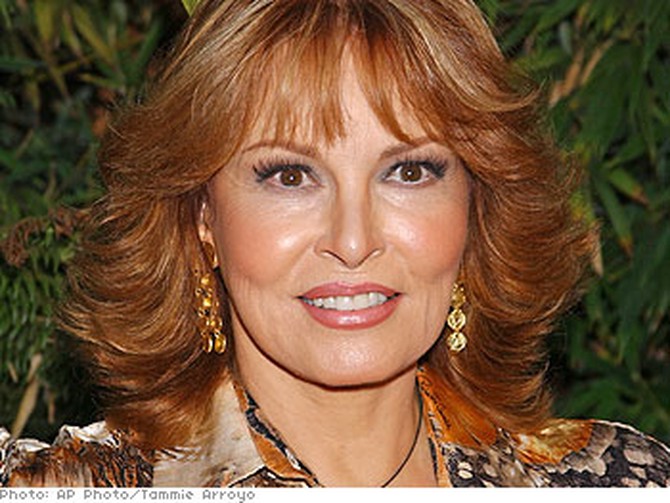
Raquel Welch
Does Raquel Welch find it easy to stay in shape? "Are you kidding? It's a drag!" she says. "I resent it—I resent not eating sweets and carbs and having to be so disciplined. But that's kind of the way life is." She says that anything you want to accomplish takes effort: having a happy marriage, a good relationship with your kids or success at work. "And you've got to stay at it all the time."
Raquel's breakthrough role in One Million Years B.C. in 1966, in which she wore a "little tiny doeskin bikini thing," made her an international sex symbol—but she says she never went to a gym or thought about diet until she was in her late 30s. "I hear Cameron Diaz say she never has to watch what she eats," Raquel says. "I think, 'Just you wait, Cameron!' I used to say that, too. I ate jelly doughnuts on the set every morning." Now for breakfast Raquel eats a health food concoction of boiled string beans, celery, parsley and zucchini.
At age 65, Raquel says, "it's a losing battle" trying to keep the shape you had in your 20s. In 2003 she embarked on a program of yoga, aerobics and weight lifting. "I can look pretty damn good for my age," she says. "But my God, that's not the whole story. I'm a much better actress, I'm a mature woman and I have so much more to offer."
Raquel's breakthrough role in One Million Years B.C. in 1966, in which she wore a "little tiny doeskin bikini thing," made her an international sex symbol—but she says she never went to a gym or thought about diet until she was in her late 30s. "I hear Cameron Diaz say she never has to watch what she eats," Raquel says. "I think, 'Just you wait, Cameron!' I used to say that, too. I ate jelly doughnuts on the set every morning." Now for breakfast Raquel eats a health food concoction of boiled string beans, celery, parsley and zucchini.
At age 65, Raquel says, "it's a losing battle" trying to keep the shape you had in your 20s. In 2003 she embarked on a program of yoga, aerobics and weight lifting. "I can look pretty damn good for my age," she says. "But my God, that's not the whole story. I'm a much better actress, I'm a mature woman and I have so much more to offer."
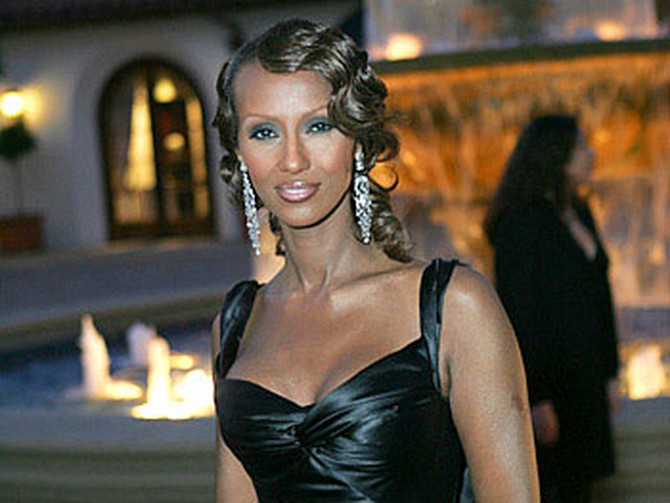
Iman
The first African to become an international supermodel, Iman struggled with a low self-esteem as a child in Somalia. In her high school, there were about 450 boys and only 32 girls. "For the prom, every girl had more than one date," she says. "But I didn't have a single date. My father actually paid one of my cousins to take me." She was a straight-A student and, as the daughter of a diplomat, spoke five languages. While studying political science at the University of Nairobi in Kenya, she was spotted by photographer Peter Beard. When Beard showed his photos to the Wilhelmina modeling agency, they sent Iman a ticket to New York. The rest is history.
Iman retired from modeling after 14 years, at the height of her success. She knew the industry loves what's new, and "I wasn't new anymore. I was maturing, and the business was not enough for me." She married rock star David Bowie, had a daughter and founded IMAN Cosmetics for skin of color.
At age 48, Iman has learned to quiet the critical voice inside. "I don't know how many women stand in front of the mirror and say, 'You look good, girl.' We only see faults. We pick, pick, pick. But now I don't pay attention to that voice. I say, 'Aii,' and move on."
Iman retired from modeling after 14 years, at the height of her success. She knew the industry loves what's new, and "I wasn't new anymore. I was maturing, and the business was not enough for me." She married rock star David Bowie, had a daughter and founded IMAN Cosmetics for skin of color.
At age 48, Iman has learned to quiet the critical voice inside. "I don't know how many women stand in front of the mirror and say, 'You look good, girl.' We only see faults. We pick, pick, pick. But now I don't pay attention to that voice. I say, 'Aii,' and move on."
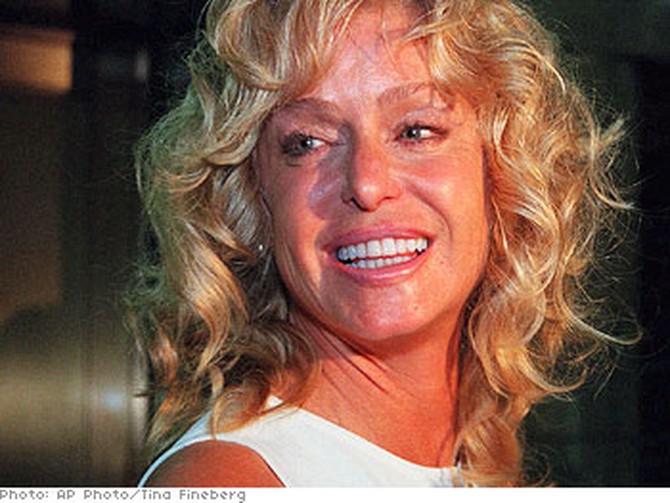
Farrah Fawcett
Her swimsuit poster broke records by selling 12 million copies in the seventies, but actress Farrah Fawcett agrees that for most young women, "whatever you have, you don't like." Farrah had "muscular legs" she thought were unattractive, even though men told her they were "great." She was aware that boys were drawn to her all through high school and college, "so when I moved from Texas to Hollywood to pursue an acting career and received a lot of attention, it wasn't extraordinary. I was used to it." She often wished she wouldn't be noticed. "When everyone would turn and look, I'd think, 'They're gonna see something wrong.'"
She knows that a time will come when people's eyes will go not to her but to the "next 22-year-old blonde. I'm still famous, so of course people turn and stare, but eventually it will be less and less." She hopes to make the transition "with dignity and grace." Even now she's not overly troubled about being 59, because in addition to acting, she paints, sculpts and enjoys her teenage son and extended family. Farrah says she still gets scrutinized by her mother, who used to ask, "Have you seen your hair from the back?" The last time her mother said this, Farrah told her, "Yo, Mom! I'm famous for it, okay? Hair—that's what I'm famous for. So you can't do that anymore."
She knows that a time will come when people's eyes will go not to her but to the "next 22-year-old blonde. I'm still famous, so of course people turn and stare, but eventually it will be less and less." She hopes to make the transition "with dignity and grace." Even now she's not overly troubled about being 59, because in addition to acting, she paints, sculpts and enjoys her teenage son and extended family. Farrah says she still gets scrutinized by her mother, who used to ask, "Have you seen your hair from the back?" The last time her mother said this, Farrah told her, "Yo, Mom! I'm famous for it, okay? Hair—that's what I'm famous for. So you can't do that anymore."
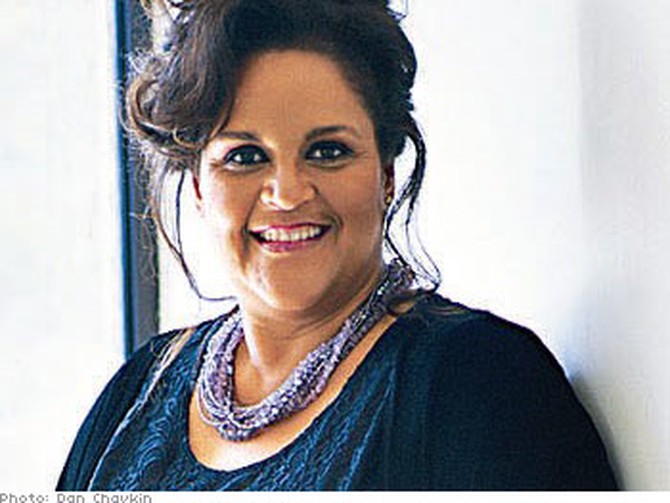
Jayne Kennedy
Not all women who once had The Body feel attractive and in shape now. Jayne Kennedy was the first black Miss Ohio to compete in the Miss USA pageant. She later went to Hollywood and was the first black woman sportscaster on CBS's NFL Today.
At age 54, Jayne says she's not happy with her body. She developed endometriosis in her 30s, which made it painful to exercise. She decided to become a full-time mother, taking care of her three daughters and a stepdaughter. During this time she gained a significant amount of weight, which she hasn't been able to lose.
In the early eighties, Jayne made a popular exercise video, Love Your Body, and her philosophy was "You should love your body and accept yourself for who you are." At present, she says, "I don't like the way I look." She believes that if you're not in shape and want to lose weight, "you shouldn't be complacent and think, 'This is just the way I am.' You should set a goal and go after it."
She says she can't work in the entertainment business now. "Success is based 90 percent on how you look," Jayne says. "That hurts me. Why can't I be a 54-year-old woman with gray hair who's overweight? Why do I have to compete with Halle Berry?" Her agenda, she says, is not to recapture the body she once had but "to get to where I'm happy with myself." She laughs. "I'm determined, and I will get there."
At age 54, Jayne says she's not happy with her body. She developed endometriosis in her 30s, which made it painful to exercise. She decided to become a full-time mother, taking care of her three daughters and a stepdaughter. During this time she gained a significant amount of weight, which she hasn't been able to lose.
In the early eighties, Jayne made a popular exercise video, Love Your Body, and her philosophy was "You should love your body and accept yourself for who you are." At present, she says, "I don't like the way I look." She believes that if you're not in shape and want to lose weight, "you shouldn't be complacent and think, 'This is just the way I am.' You should set a goal and go after it."
She says she can't work in the entertainment business now. "Success is based 90 percent on how you look," Jayne says. "That hurts me. Why can't I be a 54-year-old woman with gray hair who's overweight? Why do I have to compete with Halle Berry?" Her agenda, she says, is not to recapture the body she once had but "to get to where I'm happy with myself." She laughs. "I'm determined, and I will get there."
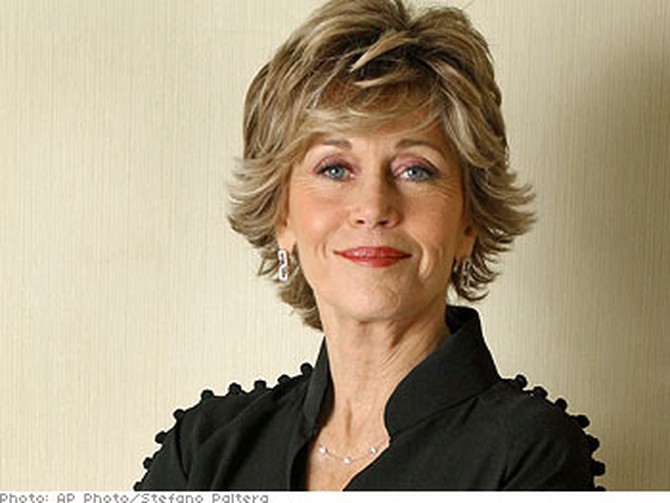
Jane Fonda
Jane Fonda, at age 68, says that most women—no matter how beautiful—grow up feeling their bodies are not perfect. She went through 30 years of food addiction that led to bulimia and anorexia. Jane says she was able to stop the behavior, but "as with all forms of addiction, you have to figure out what emotional needs you were trying to satisfy. It's a spiritual process." A major event, "one of the biggies," came three years ago when she saw Eve Ensler perform The Vagina Monologues. "I have become a very involved member of the vagina army," Jane says.
She has always had the knack for moving two steps farther than most people's comfort zone. "I don't mean to say this is an easy process," she concedes. "I may be wealthy, white, and famous, but I know how my life has been hurt because of my inability to like myself and cherish my body. I don't want it to take 60 years for other girls."
What can we learn from women whose bodies have helped make them icons? Their genetic gifts opened doors that led to glamorous careers, celebrity, money, admiration and relationships with famous men. But they didn't arrive where they are by genetics alone. They worked hard, they learned tough lessons and they can remind us now of what we know but need to hear again: that perfection is a fool's goal; that health, friends, creative work, service and nourishing relationships are what make us feel good; that looks change and life changes. The best we can do is focus on what we have the power to improve in ourselves, and when it comes to the body—love the one you're with.
She has always had the knack for moving two steps farther than most people's comfort zone. "I don't mean to say this is an easy process," she concedes. "I may be wealthy, white, and famous, but I know how my life has been hurt because of my inability to like myself and cherish my body. I don't want it to take 60 years for other girls."
What can we learn from women whose bodies have helped make them icons? Their genetic gifts opened doors that led to glamorous careers, celebrity, money, admiration and relationships with famous men. But they didn't arrive where they are by genetics alone. They worked hard, they learned tough lessons and they can remind us now of what we know but need to hear again: that perfection is a fool's goal; that health, friends, creative work, service and nourishing relationships are what make us feel good; that looks change and life changes. The best we can do is focus on what we have the power to improve in ourselves, and when it comes to the body—love the one you're with.
From the May 2004 issue of O, The Oprah Magazine

